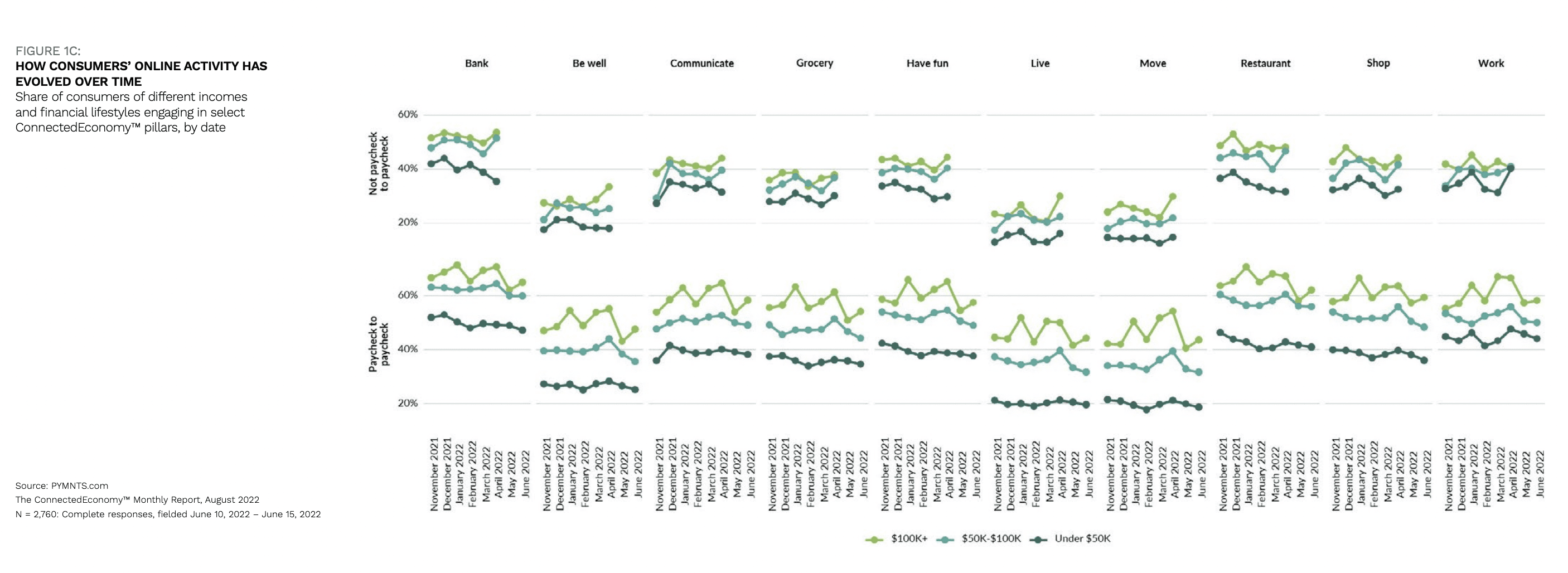Roughly Half of All High-Income Consumers Purchase Groceries Online

With the added fees of grocery delivery and the premium products many of the digitally native eGrocers tout, it is no surprise that online grocery tends to be the purview of high-income consumers.
By the Numbers
PYMNTS’ recent study, “The ConnectedEconomy™ Monthly Report: Paycheck-To-Paycheck Consumers Digitally Disengage,” finds that nearly half of all consumers earning $100K or more per year who do not live paycheck to paycheck purchased groceries online in June. Plus, upwards of 50% of those in the same income bracket who do live paycheck to paycheck did the same.
Related: NEW STUDY: Inflation Causes Widespread Digital Pullback by Financially Strapped Consumers

The Data in Action
Noting this trend, many online grocery companies are doing what they can to attract lower-income customers. Instacart, for instance, announced in July that it has expanded its Electronic Benefits Transfer and Supplemental Nutrition Assistance Program (EBT, SNAP) offering to 10 new states.
Read more: Instacart Expands EBT SNAP Offerings
“At Instacart, our goal is to continue unlocking access to nutritious food for those who need it most,” said Sarah Mastrorocco, vice president of access to food and nutrition. “We’ve long advocated to expand online EBT SNAP acceptance, and we’re proud to bring this critical service to people in 10 additional states in partnership with grocers that people know, love and trust.”